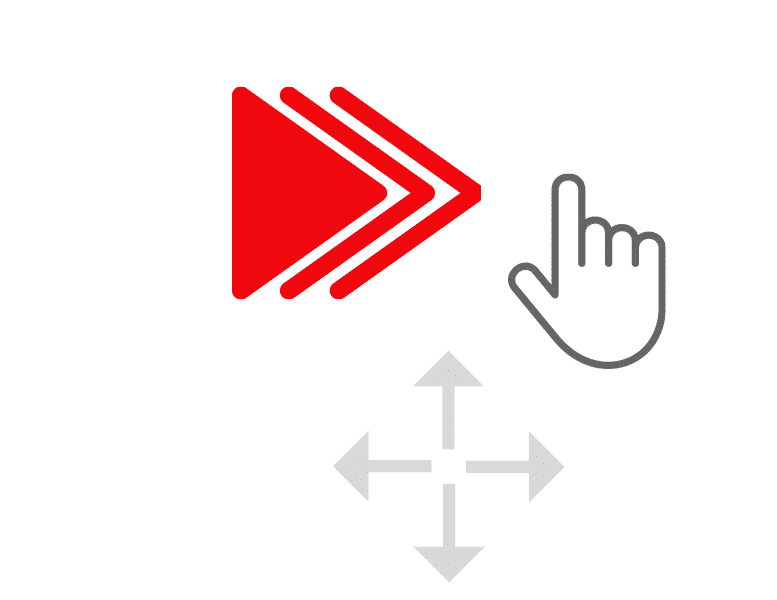Customers interact with brands across multiple platforms—from search engines to social media to influencer endorsements. In Part 3, we explored advanced personalization tactics, but to maximize their impact, you need a cohesive, multichannel marketing strategy.
In this part, we’ll cover:
- SEO strategies for ecommerce growth
- Paid advertising and retargeting tactics
- Social media engagement and shoppable content
- Influencer partnerships to drive conversions
- Creating a unified, cross-platform marketing approach
Multichannel Marketing for Ecommerce Success
Customers engage with brands across numerous platforms, from search engines to social media. To maximize your reach and drive conversions, multichannel marketing integrates platforms like SEO, paid ads, social media, and influencer partnerships into a unified strategy. A cohesive approach ensures your brand is visible and accessible wherever your customers are, fostering deeper engagement and increasing sales opportunities.
SEO: The Foundation for Sustainable Growth
Search Engine Optimization (SEO) is a long-term strategy for attracting potential customers actively searching for your products. By optimizing your website with product-related keywords, meta descriptions, and schema markup, you increase your chances of appearing in top search results. For example, implementing schema markup allows search engines to display rich snippets — such as star ratings, product prices, and availability — making your listings more appealing.
Publishing SEO-friendly content like blog posts, buying guides, and FAQs helps answer customer questions and drives organic traffic. For instance, a guide titled “Best Running Shoes for Marathon Training” can attract users in the research phase and direct them to relevant product pages.
Paid Ads: Targeted and Immediate Reach
While SEO builds long-term organic traffic, paid advertising delivers immediate results by putting your products in front of specific audiences. Platforms such as Google Ads, Facebook Ads, Instagram Ads, programmatic media buying, and OTT media buying offer powerful targeting options based on user demographics, interests, and behaviors.
To make the most of paid ads:
- Use Google Shopping Ads to showcase products with images, prices, and reviews directly in search results.
- Deploy retargeting campaigns to re-engage visitors who viewed products but didn’t complete a purchase.
- Create social media ads with eye-catching visuals and strong calls-to-action (CTAs) to drive traffic and conversions.
Combining these strategies ensures you’re connecting with potential buyers at multiple stages of their journey.

Social Media: Building Engagement and Driving Sales
Social media platforms like Instagram, TikTok, and Facebook offer more than just brand visibility — they provide tools for direct sales and engagement. Shoppable features, live events, and short-form videos help you connect with audiences in authentic, dynamic ways.
To boost ecommerce growth through social media:
- Utilize Instagram Shopping and TikTok Shop to let users buy directly from posts and videos.
- Create user-generated content (UGC) campaigns to encourage customers to share their experiences and build community trust.
- Leverage short-form videos such as TikTok clips or Instagram Reels to showcase product demos, tutorials, or customer testimonials.
A well-executed social media strategy keeps your brand relevant and accessible, transforming followers into loyal customers.

Influencer Partnerships: Authentic Reach and Credibility
Collaborating with influencers expands your brand’s reach by tapping into their engaged and loyal audiences. Influencers provide authentic, relatable content that resonates with potential customers, making their recommendations powerful drivers of purchasing decisions.
Best practices for influencer marketing include:
- Selecting influencers whose audience aligns with your target market.
- Working with micro-influencers for niche campaigns that often generate higher engagement rates.
- Measuring campaign success through engagement metrics, referral traffic, and conversion rates.
For example, a fashion brand partnering with an Instagram influencer for a seasonal lookbook can generate buzz and drive sales through exclusive discount codes or affiliate links.
Creating a Unified Multichannel Strategy
A successful multichannel approach requires consistency and seamless integration. Your messaging, branding, and offers should be synchronized across all platforms, ensuring a cohesive customer experience whether someone finds you via a Google search, social media ad, or influencer’s post.
To achieve this:
- Maintain consistent branding across channels, including visuals, tone, and messaging.
- Coordinate cross-platform promotions to create unified campaigns (e.g., a holiday sale promoted through email, social media, and paid ads).
- Integrate data with tools like HubSpot, Shopify, or Google Analytics to track customer interactions and refine your strategies.
Integrating multiple platforms ensures you meet customers where they are, enhancing visibility, engagement, and conversions. A cohesive multichannel marketing strategy transforms isolated efforts into a comprehensive approach that drives sustained ecommerce success.
Multichannel marketing helps attract and engage customers, but converting them requires a frictionless shopping experience. In Part 5, we’ll explore conversion rate optimization (CRO), checkout optimization, and trust-building tactics to maximize sales.















